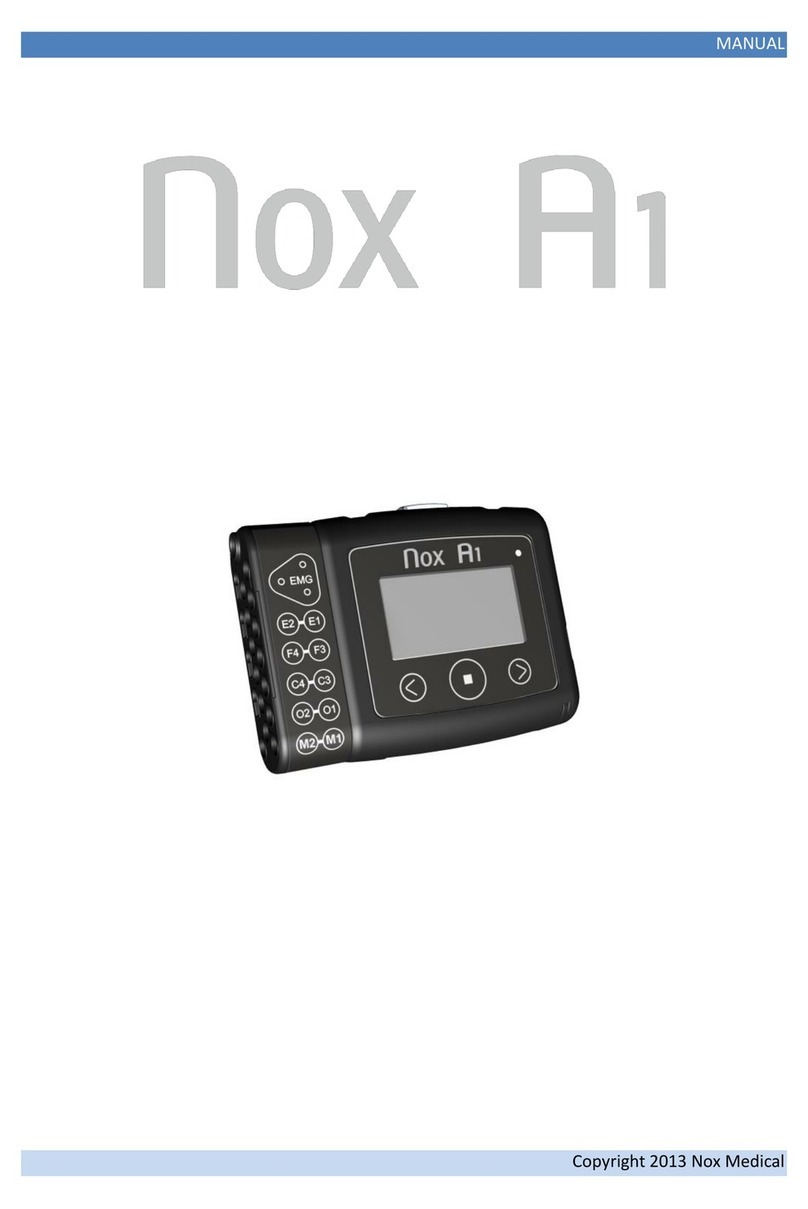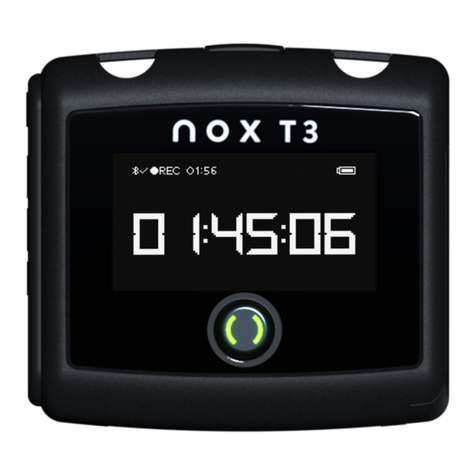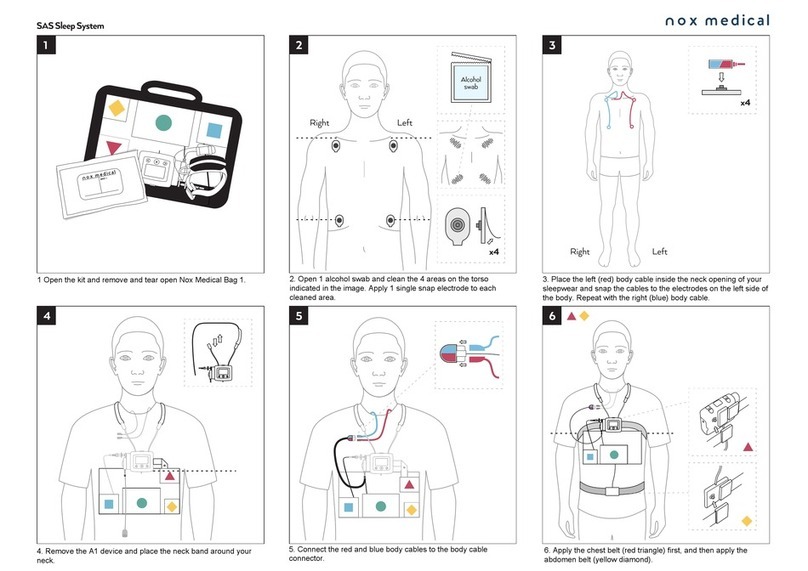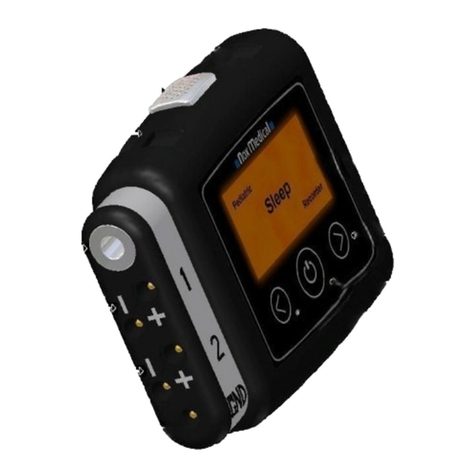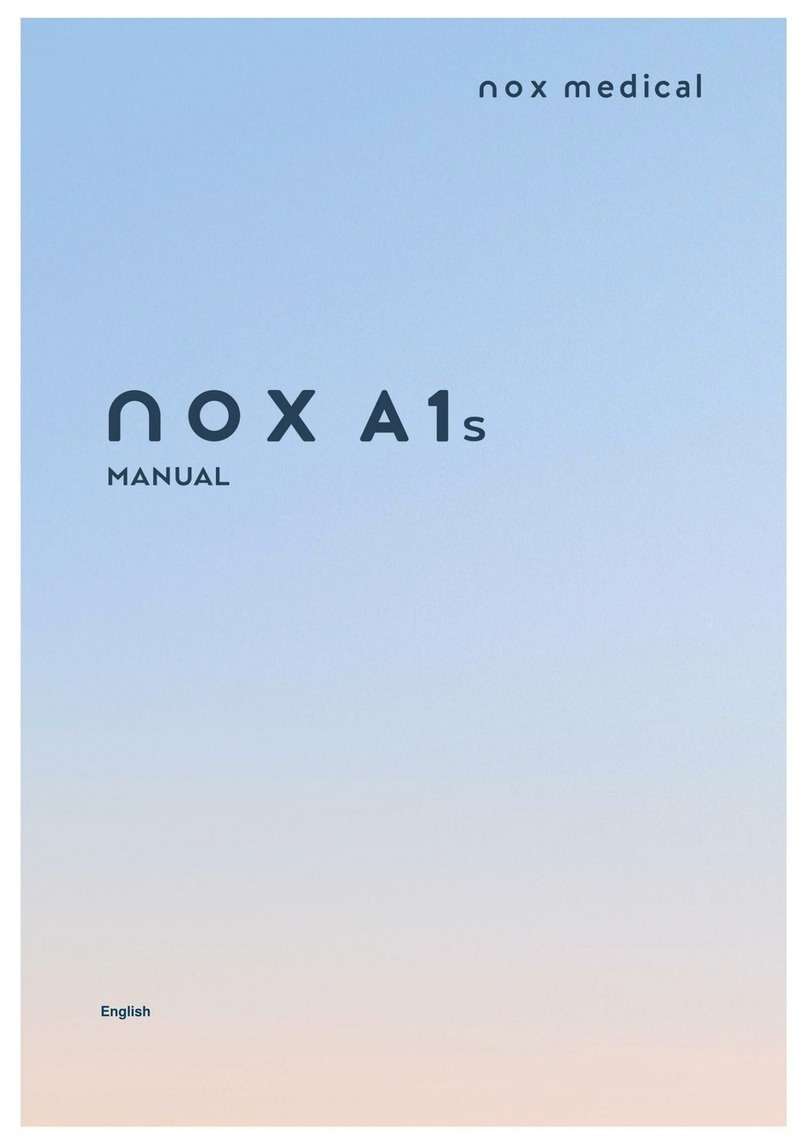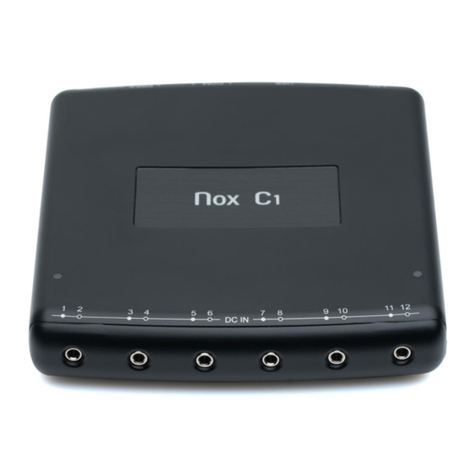Warning: The Nox T3 System is NOT certified to be used for continuous monitoring where failure
to operate can cause injuries or death of the patient.
Caution: U.S. federal law restricts this device to sale by, or on the order of, a licensed medical
practitioner.
Caution: The Nox T3 recorder complies with the international standard IEC 60601-1-2 for
electromagnetic compatibility for medical electrical equipment and/or systems. That standard is
designed to provide reasonable protection against harmful interference in a typical medical
installation. However, because of the proliferation of radio-frequency transmitting equipment and
other sources of electrical noise in healthcare and other environments, it is possible that high
levels of interference due to close proximity or strength of source might disrupt the performance
of the device, affecting recorded signals and therefore data analysis and resulting in possible
incorrect treatment. Medical electrical equipment needs special precautions regarding
Electromagnetic Compatibility (EMC), and needs to be installed and put into service according to
the EMC information detailed in the section “Electromagnetic Compatibility (EMC) Information”of
this manual.
Warning: The use of accessories, transducers, sensors, and cables other than those listed in this
manual may result in increased emissions and/or decreased immunity of the Nox T3 System and
cause injuries to the operator/patient.
Warning: The Nox T3 recorder(s) should not be used adjacent to or stacked with other equipment.
If adjacent or stacked use is necessary, the device(s) should be observed to verify normal
operation in the configuration in which it will be used and prevent abnormal operation which
might cause injuries to the operator/patient.
Warning: The Nox T3 System may be interfered with by other equipment, even if that equipment
complies with International Special Committee on Radio Interference (CISPR) emission
requirements, causing possible patient harm.
Warning: External equipment and all auxiliary devices intended for connection to signal input,
signal output or other connectors shall comply with the relevant product safety standards, e.g. IEC
60950-1 for IT equipment and the IEC 60601 series for medical electrical equipment, to prevent
electric shocks. In addition, all such combinations –systems –shall comply with the safety
requirements stated in the collateral standard IEC 60601-1-1 or the general standard IEC 60601-1,
edition 3/3.1, clause 16. Any equipment not complying with the leakage current requirements in
IEC 60601-1 shall be kept outside the patient environment, i.e. at least 1.5 m from the patient
support. Any person who connects external equipment to the signal input, signal output or other
connectors has formed a system and is therefore responsible for the system to comply with the
requirements. If in doubt, contact a qualified medical technician or your local representative.
Caution: The Nox T3 recorder does not increase the safety risk for pacemaker patients if the
pacemakers comply with the standard: EN 50061 Safety of Implantable Cardiac Pacemakers. Using
non-compliant pacemakers may result in the operation of the pacemaker being affected by the
use of the Nox T3 recorder and lead to possible patient harm. Prior to using the device with
pacemaker patients, the operator should consult the accompanying documents of the pacemaker
regarding its certifications and requirements of use or, if necessary, contact the producer.
Warning: Do not use the Nox T3 recorder and accessories during radiography/X-ray studies. The
energy absorption in the device, cables or electrodes might lead to excessive heating and cause






